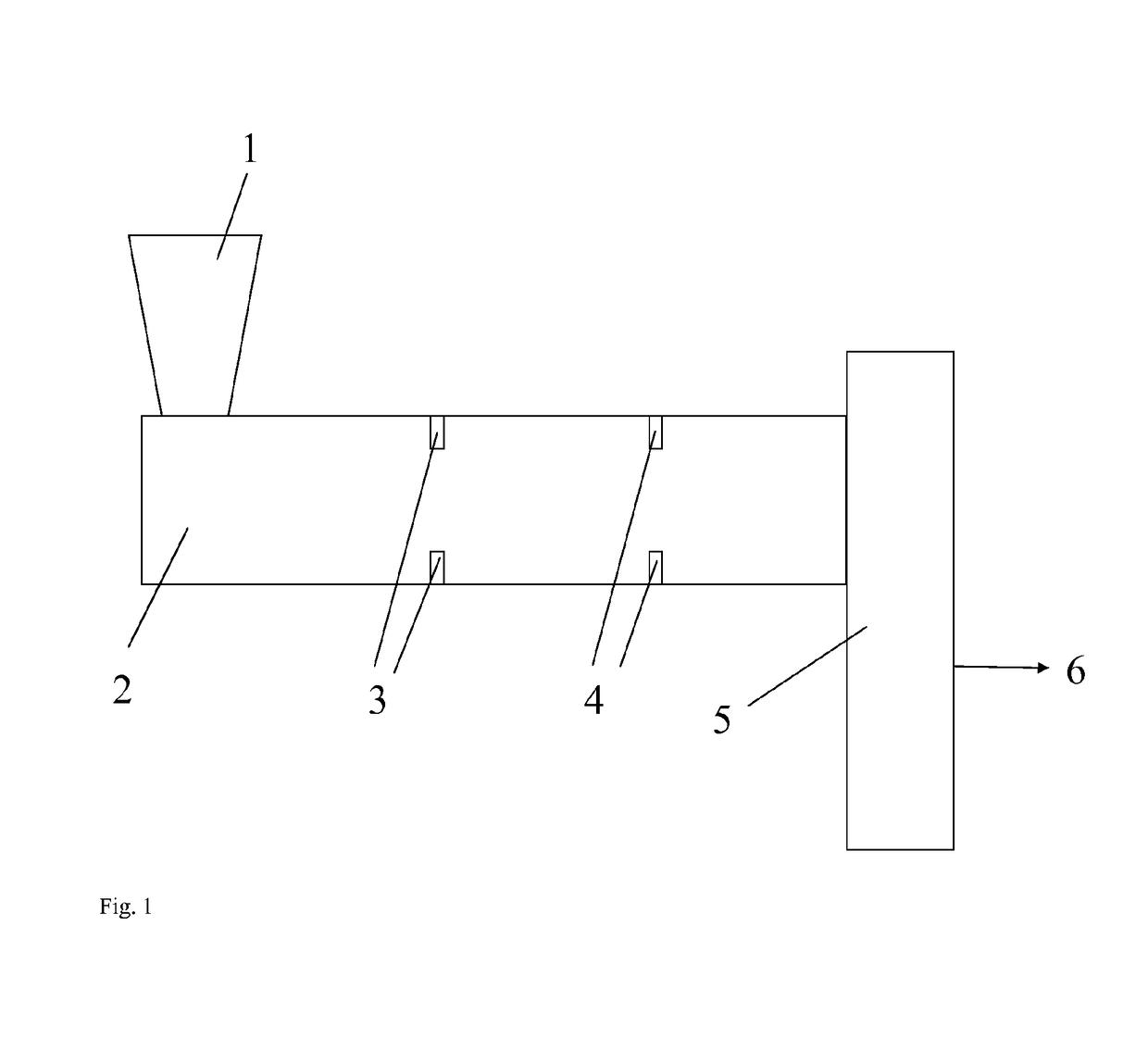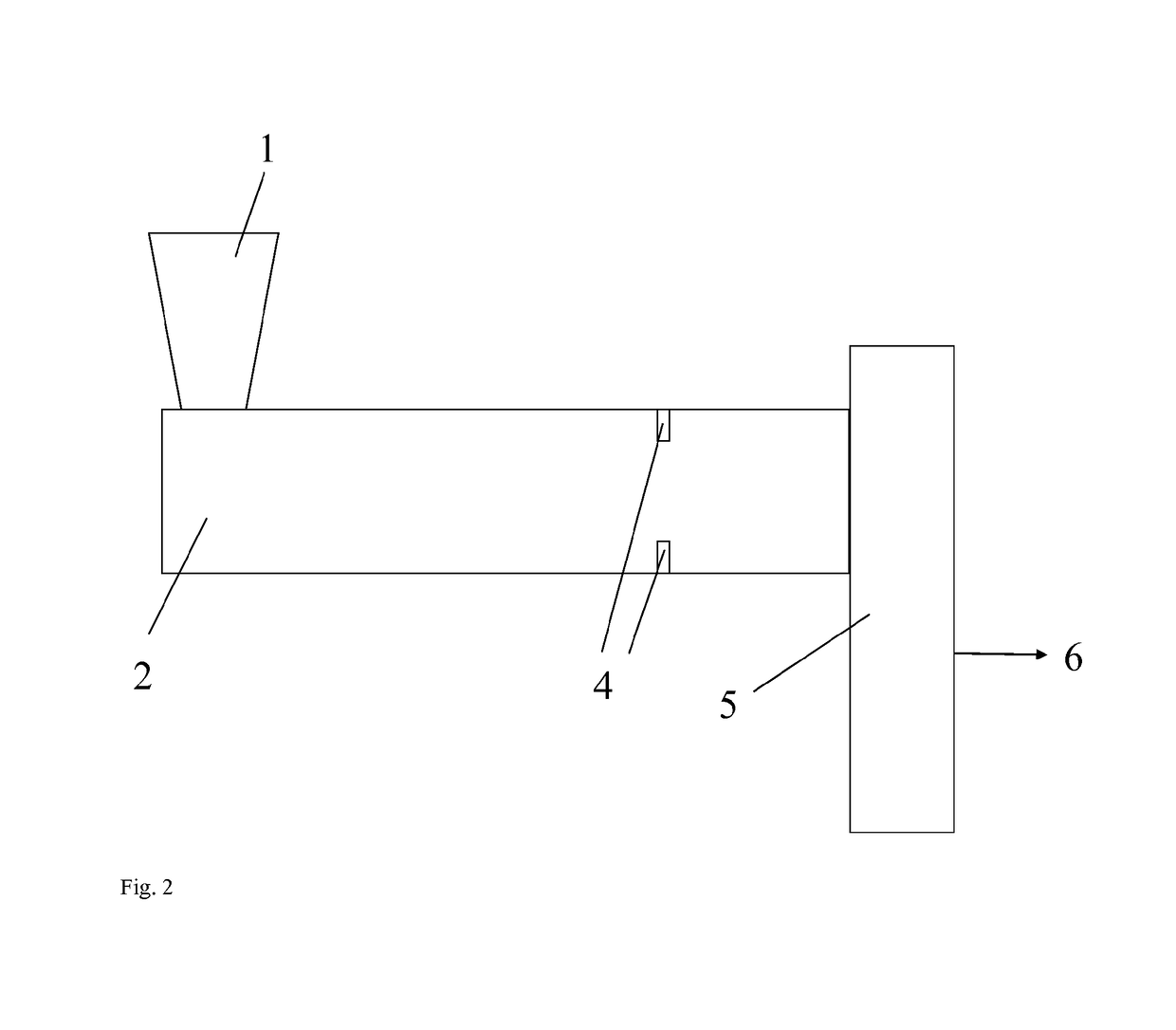Process for improving carbon black dispersion
a technology of carbon black and dispersion, which is applied in the field of pigment-containing polycarbonate compounds, can solve the problems of large pigment agglomerates, mechanical properties of polymer compositions, and surface properties of materials, and achieve the effect of improving the dispersion of pigments
- Summary
- Abstract
- Description
- Claims
- Application Information
AI Technical Summary
Benefits of technology
Problems solved by technology
Method used
Image
Examples
example 1
Comparison
[0221]An elastomer-containing polycarbonate blend having a melt volume flow rate (MVR) of 27 cm3 / 10 min (measured according to ISO 1133 at 260° C. and 5 kg) was prepared according to formulation 1 (Table 1) using test arrangement 7. Carbon black powder according to Table 1 was added as the carbon black component.
[0222]For the preparation of the compound, a premix was first prepared from components b (carbon black component), c (demoulding agent) and g (additives) and also a9 given in Table 1 in the mentioned amounts, Mixing of the premix was carried out in a container mixer from Mixaco (type CM30 with Z tool) for 4.5 minutes at a speed of 300 l / min and a degree of filling of the mixer of 80%.
[0223]The premix and the remaining mixture constituents listed in Table 1 where then metered separately from one another, in each case by means of a differential proportioning weigher (not shown), via the feed hopper 8a into the main intake into housing 9a of the extruder.
[0224]In the ...
example 2
According to the Invention
[0227]An elastomer-containing polycarbonate blend having a melt volume flow rate (MVR) of 27 cm−1 / 10 min (measured according to ISO 1133 at 260° C. and 5 kg) was prepared according to formulation 4 (see Table 1) using test arrangement 7. Carbon black / demoulding agent masterbatch granules according to Table 1, which were prepared as described under A.2, were added as the carbon black component.
[0228]For the preparation of the compound, a premix was first prepared from components b (carbon black component), f (elastomer) and g (additives) given in Table 1 in the mentioned amounts. Preparation of the premix and compounding of the moulding composition were carried out as described in Example 1.
[0229]The process parameters of the extruder and the number, measured as described above, of surface defects, based on one square centimeter, and the measured notched impact strength according to ISO 180 / 1A are listed in Table 4 under Example 2.
[0230]A comparison of Examp...
example 3
Comparison
[0231]An elastomer-containing polycarbonate blend having a melt volume flow rate (MVR) of 18 cm3 / O-min (measured according to ISO 1133 at 260° C. and 5 kg) was prepared according to formulation 18 (see Table 1) using test arrangement 7. Carbon black powder according to Table 1 was added as the carbon black component.
[0232]For the preparation of the compound, a premix was first prepared from components b (carbon black component), c (demoulding agent) and g (additives) and also f4 given in Table 1 in the mentioned amounts. Preparation of the premix and compounding of the moulding composition were carried out as described in Example 1.
[0233]The process parameters of the extruder and the number, measured as described above, of surface defects, based on one square centimeter, are listed in Table 4 under Example 3.
PUM
| Property | Measurement | Unit |
|---|---|---|
| room temperature | aaaaa | aaaaa |
| temperatures | aaaaa | aaaaa |
| temperatures | aaaaa | aaaaa |
Abstract
Description
Claims
Application Information
 Login to View More
Login to View More - R&D
- Intellectual Property
- Life Sciences
- Materials
- Tech Scout
- Unparalleled Data Quality
- Higher Quality Content
- 60% Fewer Hallucinations
Browse by: Latest US Patents, China's latest patents, Technical Efficacy Thesaurus, Application Domain, Technology Topic, Popular Technical Reports.
© 2025 PatSnap. All rights reserved.Legal|Privacy policy|Modern Slavery Act Transparency Statement|Sitemap|About US| Contact US: help@patsnap.com



